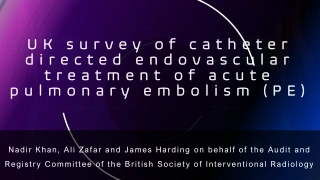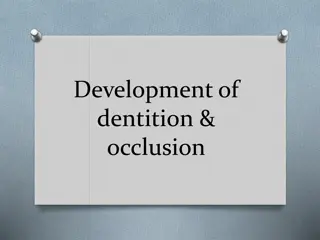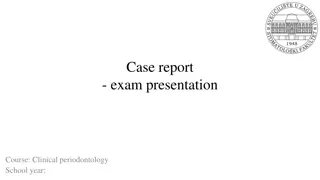
REBOA: Resuscitative Endovascular Balloon Occlusion of the Aorta
REBOA, a minimally invasive procedure, is explored by Dr. Korbin Haycock in this informative presentation. Learn about its applications, insertion techniques, anatomy, and contraindications. Images and insights provide a comprehensive overview of this life-saving intervention.
Download Presentation

Please find below an Image/Link to download the presentation.
The content on the website is provided AS IS for your information and personal use only. It may not be sold, licensed, or shared on other websites without obtaining consent from the author. If you encounter any issues during the download, it is possible that the publisher has removed the file from their server.
You are allowed to download the files provided on this website for personal or commercial use, subject to the condition that they are used lawfully. All files are the property of their respective owners.
The content on the website is provided AS IS for your information and personal use only. It may not be sold, licensed, or shared on other websites without obtaining consent from the author.
E N D
Presentation Transcript
Korbin Haycock, MD, FACEP, RDMS, RDCS To REBOA or not to REBOA?
Conflict of interest? Prytime Medical loaned me the simulation model for this course Otherwise, I have no other conflict of interest
Overview and Key Points What is REBOA and what is the idea(s) behind it? How do you place a REBOA catheter? What are the indications for REBOA and what is the evidence that it works? Possible non-trauma applications
What is Resuscitative Endovascular Balloon Occlusion of the Aorta? A minimally invasive procedure used in place of an emergency thoracotomy for traumatic arrest There are some contraindications and possible additional indications with the procedure Or a means to buy a bit of time to get definitive control of bleeding not responsive to resuscitative efforts
Insertion Cannulate a femoral artery and drop a guidewire Insert a 7Fr introducer catheter Measure Evacuate Flush Insert Inflate Secure
Anatomy The aorta (when talking REBOA) is divided into 3 zones Zone 1 Left subclavian artery to the celiac artery Segment about 20 cm long Zone 2 Celiac artery to the most distal renal artery Segment about 3 cm long Zone 3 Most distal renal artery to the aortic bifurcation Segment about 10 cm long
Anatomy External landmarks for the zones are as follows: Zone 1: The Sternal Notch (45 cm) Zone 3: The Xiphoid (28 cm) We don t put the balloon in Zone 2
Test 1 Test 2 or pelvic instability Test 3 (Brenner, 2015)
Contraindications Severe TBI Suspected traumatic proximal aortic transection Traumatic arrest due to tension PTX or pericardial tamponade
Traumatic Indications Trauma to the torso with uncontrolled hemorrhage and shock This includes solid organ injury Pelvic injuries
Complications Venous placement Placement in smaller arteries Vascular dissection Retroperitoneal hemorrhage Embolic clots Ischemia
Data from the AAST/AORTA registry (DeBuse, 2016) Data from 8 level 1 trauma centers 46 REBOA, 68 Open AO REBOA with higher SBP 90 mmHg vs 65 mmHg Similar Mortality 72% vs 84% (p=0.12) Adjusted Mortality REBOA vs Open AO (OR, 0.263; 95% CI 0.043-1.61)
Data from the AAST/AORTA registry (Brenner, 2018) 285 patients without penetrating thoracic injury In patients without pre- hospital CPR, REBOA had better survival to discharge RT 3.4% vs REBOA 22.2% And, if arrival with hypotension: RT 0% vs REBOA 44%
Survival of severe blunt trauma patients treated with resuscitative endovascular balloon occlusion of the aorta compared with propensity score-adjusted untreated patients. J Trauma Acute Care Surg Norii et al. 2015 Apr;78(4):721-8. Inoue et al. Resuscitative endovascular balloon occlusion of the aorta might be dangerous in patients with severe trauma: a propensity score analysis. The Journal of trauma and acute care surgery. 2016 Apr;80(4):559-66
Nationwide Analysis of Resuscitative Endovascular Balloon Occlusion of the Aorta in Civilian Trauma Bellal Joseph, MD et al JAMA Surg. Published online March 20, 2019. doi:10.1001/jamasurg.2019.0096 Propensity matched retrospective analysis of REBOA vs no REBOA REBOA with higher rates of mortality at 24 hours, AKI, leg amputations However: SBP in REBOA 108 mmHg, Unknown inflation times, increased time to definitive management
What about non-trauma indications? No real evidence beyond some case reports and case studies In principle, REBOA does make sense in multiple scenarios
Non-Traumatic Indications Exsanguinating Ectopic Pregnancy Upper GI bleeding (non variceal) Gastroduodenal artery Ruptured AAA Cardiac Arrest
Summary REBOA is a new technology with potential harms, but also very promising benefits The technology is evolving and improving making REBOA safer and probably more effective Optimal indications for REBOA still need to be explored and worked out Ongoing research for both traumatic and non-traumatic uses of REBOA will help guide future use
References Bellal Joseph, MD et al,. Nationwide Analysis of Resuscitative Endovascular Balloon Occlusion of the Aorta in Civilian Trauma JAMA Surg. Published online March 20, 2019. doi:10.1001/jamasurg.2019.0096 Brenner et al., Resuscitative Endovascular Balloon Occlusion of the Aorta and Resuscitative Thoracotomy in Select Patients with Hemorrhagic Shock: Early Results from the American Association for the Surgery of Trauma's Aortic Occlusion in Resuscitation for Trauma and Acute Care Surgery Registry. J Am Coll Surg 2018 May;226(5):730-740. DeBose et al., The AAST prospective Aortic Occlusion for Resuscitation in Trauma and Acute Care Surgery (AORTA) registry: Data on contemporary utilization and outcomes of aortic occlusion and resuscitative balloon occlusion of the aorta (REBOA). J Trauma Acute Care Surg. 2016 Sep;81(3):409-19 Inoue et al. Resuscitative endovascular balloon occlusion of the aorta might be dangerous in patients with severe trauma: a propensity score analysis. The Journal of trauma and acute care surgery. 2016 Apr;80(4):559-66 Norii et al. Survival of severe blunt trauma patients treated with resuscitative endovascular balloon occlusion of the aorta compared with propensity score-adjusted untreated patients.J Trauma Acute Care Surg 2015 Apr;78(4):721-8






















